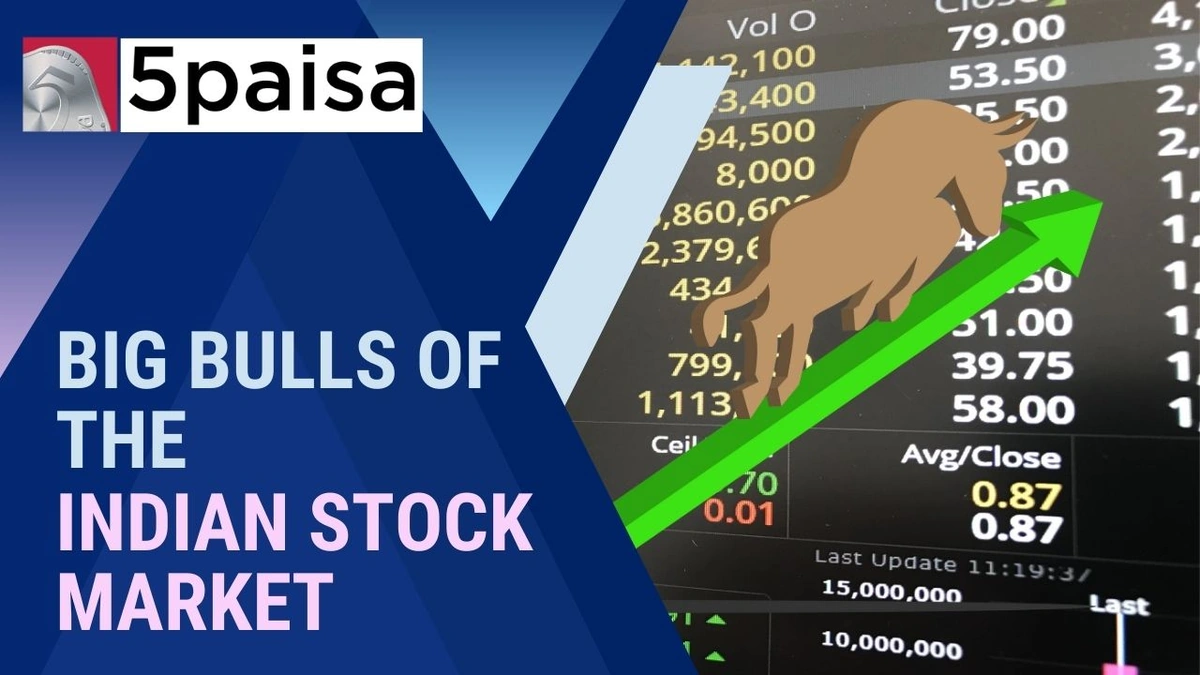Indian Stocks Record Strongest Week in 3 Months
The Indian stock market, it’s like that friend who’s been working out in secret and suddenly shows up ripped. You’re impressed, sure, but also a little curious. What sparked this sudden burst of energy? This past week, Indian stocks recorded their strongest performance in three months, and while the headlines shout about the gains, let’s dive into the why . It’s not just about the numbers; it’s about what these numbers signal about the Indian economy and what it means for you, the investor, the everyday person trying to make sense of it all.
Decoding the Rally | More Than Just Numbers

So, what fueled this surge? Was it a sugar rush from some fleeting news, or is there a more substantial foundation? Here’s the thing: several factors converged to create this bullish momentum. First, we saw positive cues from global markets. A sense of stability returned to international economies, and that always has a ripple effect here. Then, a string of encouraging domestic economic data painted a brighter picture of India’s growth trajectory. Think about it – inflation showing signs of cooling, industrial production picking up steam – all these things contribute. And, of course, foreign institutional investors (FIIs) played their part, injecting fresh capital into the market. According to recent data from the National Stock Exchange ( NSE ) , FIIs have been net buyers, indicating renewed confidence in Indian equities .
But, and this is a big but, it’s essential to remember that the stock market is not the economy. It’s a reflection, yes, but a sometimes distorted one. A common mistake I see people make is to assume a rising stock market automatically means all is well. It doesn’t. It means investor sentiment is positive, and that’s often driven by expectations of future growth and earnings.
The Sectors Leading the Charge
Not all sectors are created equal, especially in the stock market. During this recent rally, certain sectors stood out, pulling the rest of the market along with them. Financial services, for example, witnessed significant gains. Banks and NBFCs (Non-Banking Financial Companies) benefited from improved asset quality and rising credit demand. The IT sector, too, saw renewed buying interest, driven by positive earnings forecasts and a rebound in global tech spending. And then there’s the auto sector, which has been steadily recovering from the pandemic-induced slump, with sales figures showing consistent growth. What fascinates me is how these seemingly disparate sectors are actually interconnected. A healthy financial sector fuels growth in other sectors, and a thriving auto industry boosts demand for raw materials and components. It’s all a complex web, and understanding these connections is key to making informed investment decisions.
This brings opportunities for investors to consider various investment strategies , but careful stock analysis and financial planning is crucial.
What This Means for the Average Investor
Okay, so the market’s up. Great. But what does it really mean for you, the average investor, the person diligently saving and investing for their future? Should you jump on the bandwagon and start buying stocks indiscriminately? Absolutely not. This is a time for caution and strategic thinking, not reckless abandon. If you’re a long-term investor with a well-diversified portfolio, you should not panic. Volatility is part and parcel of the stock market and you should stay the course. However, this rally presents an opportunity to re-evaluate your portfolio, identify areas that may be overvalued, and consider rebalancing your holdings. As per expert analysis, focus on fundamentally sound companies with strong growth potential.
Let me rephrase that for clarity: don’t chase the rally. Instead, use it as an opportunity to refine your investment strategy. And remember, diversification is your best friend. Don’t put all your eggs in one basket. Spread your investments across different sectors and asset classes to mitigate risk. Before investing, make sure you do your research on stock market trends and understand the risks involved.
Navigating the Road Ahead | Challenges and Opportunities
The market may be celebrating now, but let’s not get carried away. Several challenges still loom on the horizon. Global economic uncertainties, rising inflation, and geopolitical risks could all throw a wrench in the works. And, of course, there’s the ever-present risk of policy changes and regulatory surprises. What fascinates me is how resilient the Indian market has been in the face of these challenges. It’s a testament to the underlying strength of the Indian economy and the growing sophistication of Indian investors.
However, this also presents opportunities. The Indian economy is undergoing a structural transformation, driven by factors like urbanization, rising incomes, and technological innovation. These trends are creating new investment opportunities in sectors like infrastructure, healthcare, and renewable energy. The one thing you absolutely must double-check before investing in high growth stocks is your risk tolerance. If you’re a risk-averse investor, then you might want to reconsider, as these stocks can be very volatile. Additionally, be aware of investment schemes promising unrealistic returns.
To gain more insight into this matter, resources offering detailed stock analysis can be very helpful.
Future Outlook for Indian Stocks
Predicting the future of the stock market is a fool’s errand, but we can make some informed guesses based on current trends and future expectations. Most analysts predict a strong growth trajectory for Indian stock market , fuelled by both domestic and international factors. Also the expectation of continued reforms and investments will boost investor confidence. The Indian economy’s long-term growth potential remains intact, but the path ahead may be bumpy. It’s best to keep checking the official portal of NSE .
FAQ Section
Frequently Asked Questions (FAQs)
What if I’m new to investing? Where do I start?
Start with the basics. Learn about different asset classes, understand your risk tolerance, and create a financial plan. Consider seeking advice from a qualified financial advisor.
Is it safe to invest during a market rally?
It’s never “safe” to invest, but you can manage your risk. Don’t chase the rally. Focus on fundamentally sound companies and diversify your portfolio.
How often should I review my portfolio?
At least once a year, or more frequently if your circumstances change or the market becomes volatile. But avoid making knee-jerk reactions to short-term market fluctuations.
What are some common mistakes to avoid when investing?
Chasing hot stocks, not diversifying, ignoring your risk tolerance, and letting emotions drive your decisions are common pitfalls.
Where can I find reliable information about Indian stocks?
Consult reputable financial news websites, company reports, and research from brokerage firms.
What is the role of stock brokers?
Stock brokers provide access to the stock market, execute trades, and offer investment advice. Choose a broker carefully and understand their fees and services.
So, Indian stocks had a good week. But remember, the market is a marathon, not a sprint. Invest wisely, stay informed, and don’t let short-term fluctuations derail your long-term goals. And if it all feels overwhelming, remember that coffee shop chat? Seek out a knowledgeable friend or advisor. Investing shouldn’t be a solitary journey.













